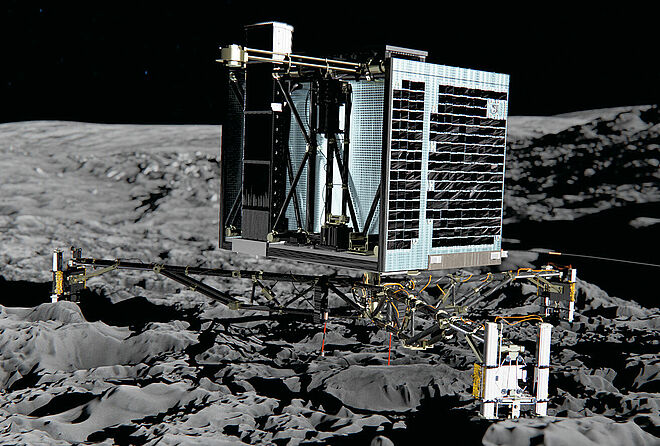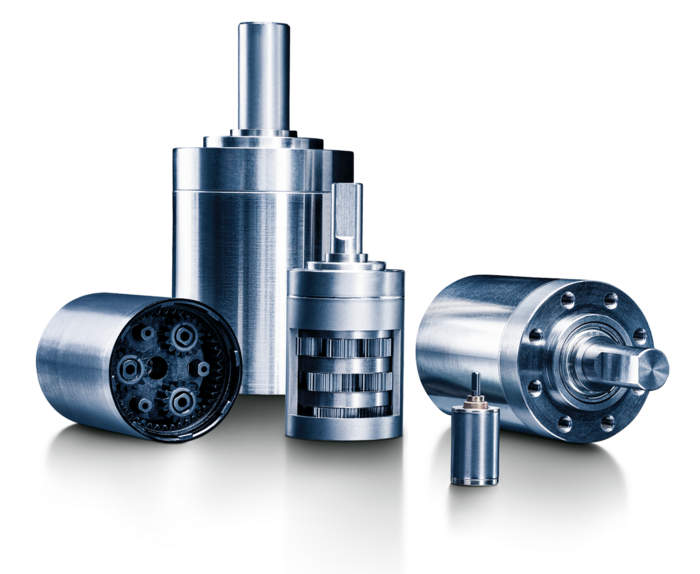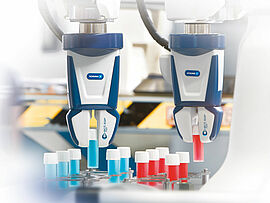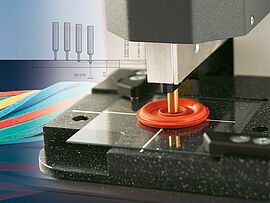The output shaft of the suitable FAULHABER motor drives the sun gear of the first stage of the planetary gearhead. How many other stages follow is dependent on the desired reduction ratio. The spectrum here ranges from 1:3 to 1:7.
The planetary gearheads from FAULHABER are, in principle, designed to maximize the torque. The distribution of the load over numerous contact points makes them especially robust and long lasting. For the same reason, they are, in principle, ideally suited for intermittent operation. At the same time, they are especially efficient. They are suited for continuous, intermittent and alternating operation with frequent starting/stopping and load changes as well as for clockwise and counterclockwise rotation. Choosing the optimum gearhead allows smaller motors to be used, thereby increasing the economic efficiency of the entire drive.
Depending on the product series, the gears of the planetary gearheads are made of metal or plastic. Plastic gears are lighter, quieter and make cost-effective solutions possible. Metal gears can transfer larger forces and, when subjected to the same load, have a longer service life. They are also suited for vacuum applications and high temperatures. The two materials can also be combined. In this case, the motor-side input stage is equipped with gears made of plastic to keep the noise level down at high speed.
The lubrication of the gearhead is designed for its entire service life; relubrication is not necessary. Specific greases are available for various requirements, including special greases for especially demanding operating conditions such as extreme temperatures or vacuum.





























